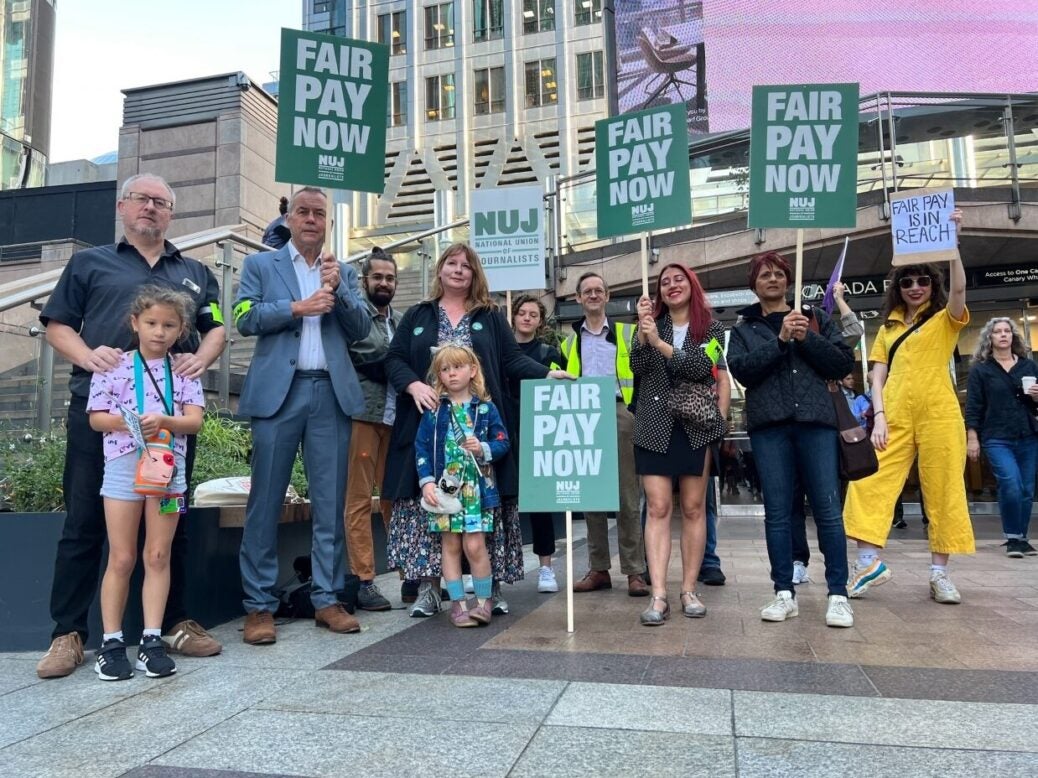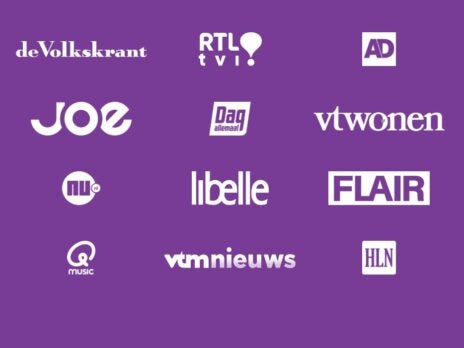
Average pay for UK journalists has kept pace with the wider economy with those using AI paid more, according to a new survey.
The average salary for a journalist in the UK is now £34,500, according to the NCTJ’s Journalists at Work report. The average salary goes up to £45,547 for those working in London.
The NCTJ-commissioned Journalists at Work research, authored by consultant Mark Spilsbury, is the fourth of its kind, following previous studies in 2018, 2012 and 2002. It is based largely on an online survey filled in by 1,025 journalists between January and March. Some UK government data is also included.
The average salary has grown in line with the rest of the economy, the report said, following a period of stagnation. Previously the average UK journalist salary had stayed at £27,500 for at least six years between 2012 and 2018.
The highest average salaries are for those working in TV (£50,000) with the lowest for those working in radio (£32,045) and newspapers (£32,213).
Separate average salary figures are provided by the Annual Survey of Hours and Earnings from the Office of National Statistics which has two journalist categories. Newspaper and periodical editors have an average salary of £38,649 according to last year’s survey, while newspaper and periodical journalists and reporters are on £35,842. These compare to an average salary for all workers of £29,669.
Speaking at an event in London to launch the report findings on Thursday, outgoing NCTJ chairman Kim Fletcher said: “I thought the average salary was quite interesting. People here I think, many people would say ‘woah, if I could get up to that average salary I’d be quite surprised because I’m not seeing stuff like that.
“So again bear in mind that’s an average where there’s a load of stuff above it and a load of stuff below, but I thought that was more encouraging than we might have thought.”
Half of journalists feel fairly rewarded for their work
Half of journalists in the survey (51%) feel fairly rewarded for their work, up from 44% six years ago and a return to 2002 levels.
The report shows that journalists who currently use AI in their jobs are earning £38,292 on average, compared to £33,734 for those who do not.
Report author Spilsbury told Press Gazette this does not appear to be attributable to those using AI being more senior: Younger journalists are more likely to feel like they understand AI: 43% under 25 think they do, versus 22% of those aged 50 and over.
Despite this, the roles most likely to be using AI were section heads (53%) and editorial management (40%).
NCTJ chief executive Joanne Forbes said at the event: “Interestingly, those who do use it are being paid more than those who don’t so to some of our new entrants to journalism, get those AI skills because that could inflate your salaries. It’s obviously a prized skill.”
Two thirds (65%) of journalists do not use AI in their work and 76% fear it may be a threat.
Of those who do use AI at work, 19% use it to record or transcribe interviews, 9% to produce text articles, 7% to examine or scrape data, 4% to target audiences more effectively, 3% to create graphics and 2% for research or idea generation.
Most (60%) say they feel they do not have a sufficient understanding of how AI could be used to assist their journalism, whereas 27% feel they do.
A quarter feel they need to learn new skills to efficiently use AI – though video skills were deemed more desirable (with video editing on 34% and video shooting on 29%).
Forbes said: “It may be that AI’s limited by lack of understanding – there’s clearly a training need – or permissions to use it. As this understanding develops… we expect this limited use will increase rapidly.”
Three-quarters say journalism ‘is a job I enjoy doing’
Alongside AI, there have been substantial changes to journalists’ jobs since 2018. The report summarised these as “an increased digital focus, less work stability and security, and increased workload and intensity”.
Some 58% of journalists are now developing content mainly for online platforms, up from 36% in 2018 (although the same percentage – 85% – did produce online content to any extent six years ago). Less than a fifth (17%) are mainly print journalists nowadays, down from 45% in 2018.
Spilsbury wrote that although there is a perception that journalists work particularly long hours, this was not borne out by the survey. They worked 36.2 hours per week on average, compared to an average of 36.4 hours for all workers. Most (86%) thought their hours were reasonable, up from 81% in 2018 and 82% in 2012.
The report findings also suggest home working is more common among journalists: 11% say they are only office-based compared to 64% of the overall workforce who say they never work at home. Half said the ability to work at home makes being a journalist more attractive, while 34% said it makes no difference and 16% said it makes it less attractive. By far the biggest concern shared around home-working was isolation (44%) followed by the ability to learn from others (9%).
Despite changes in the industry there has been little variation in confidence since 2018: 46% are confident about the future of journalism as a profession versus 35% who are not.
And 73% say they agree with the statement “journalism is a job I enjoy doing”, level with 2018.
Similarly 63% say they would advise a young person to become a journalist, comparable to in 2018 (62%).
National employment data for 2023 estimates a total of 83,500 journalists in the UK – down from a peak of 104,500 in 2021. Though this data is extrapolated from a relatively small sample so has a high margin of error.
Diversity in journalism: ‘Progress is disappointing’
The NCTJ’s annual Diversity in Journalism report was not put out this year due to concerns over the accuracy of Labour Force Survey data amid falling response rates. This report therefore is the first opportunity this year to evaluate recent progress.
It found that journalism is still disproportionately represented by individuals from white ethnic groups (91% compared to 85% in the overall UK workforce). White journalists also have a higher average salary: £35,867 versus £32,500 for those from ethnic minority backgrounds.
Class also remains a concern: 67% of journalists had a parent in one of the three highest occupational groups, compared to 45% of all UK workers. And 9% had a parent in the lowest two occupational groups, versus 19% of the workforce.
The report said: “This data confirms that one of the most pressing issues (first identified in the 2002 report) was the impact of social class on the likelihood of working as a journalist… It seems the concerns first raised in 2002 and maintained since are still relevant.
“The increasing need for a postgraduate qualification, the growth of a loans culture and the increased use of unpaid work placements has led to a situation where would-be journalists tend to need financial support from family to fund courses or a period of unpaid work. The implication of this is that young people not in these circumstances continue to be deterred from becoming journalists.”
NCTJ chief executive Joanne Forbes said: “This under-representation is further reinforced by the high levels of qualification attainment required to enter the profession, and employers predominantly recruit graduates.
“NCTJ qualifications are vital to ensure high standards in the profession, but pathways into journalism must be widened and not based on unpaid metropolitan work experience expectations if we are to be successful in employing talent from underrepresented groups.”
In addition journalists tend to be older than the overall workforce (2% are under 25 versus 11% of all in employment, while 40% are aged 50 and over versus 32% of the workforce).
They are also less likely to be women: 42% of journalists are female compared to 48% of the workforce. Male journalists also have a higher average salary: £37,264 versus £33,867 for women).
Overall, Forbes said: “Despite efforts to improve diversity in journalism, progress is disappointing.”
Safety of journalists: Half have received abuse
The proportion of journalists who engage in online debate and discussion with the people who consume their content has fallen from 45% in 2018 to 28% and that this may be linked to concerns about online harassment and threats to safety.
The survey found that half (51%) of journalists have experienced abuse, harassment or violence in their work, with the highest level among newspaper journalists (62%) and photographers (88%) the most likely individual role to have done so. Just under half of all journalists have sought support about these issues but just 18% have received such support.
Some 61% of those who have received abuse say their work has made them feel anxious, compared to 50% of journalists who felt anxious and had not received abuse.
Email pged@pressgazette.co.uk to point out mistakes, provide story tips or send in a letter for publication on our "Letters Page" blog







